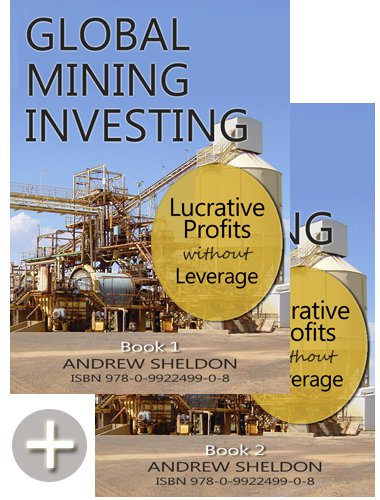The world is currently experiencing an energy shortage. There are several reasons for the shortage:
- Excessive intensity of consumption by the US
- Strong growth by the US, China & India in particular, as well as other emerging markets
- Shortfall of refining capacity
Upstream Sector – Exploration
Contrary to investor perceptions, there is no shortage of oil. For the last 30 years oil reserves have remained between 30-40years of annual consumption, or 1 trillion barrels in absolute terms. The bulk of these reserves lie in the Middle East – Saudi Arabia, Iraq, Kuwait, UAE, etc. For this reason, the OPEC countries are likely to increase their share of production capacity. In addition, there are still a lot of areas which are still eventually virgin exploration targets. These areas include:
- Deep water areas of existing & new basins
- Russia – particularly the Siberian peninsula
- West Africa
- India and the Bay of Bengal (delta)
Downstream Sector – Refining
The reason for high oil prices is not lack of oil, but largely poor planning to ensure adequate refining capacity to get that oil to the market. There are several reasons for this:
- Planning & government licensing, eg. Land availability, government permitting greatly slows down the development of new refineries.
- Capital intensive: Refineries are expensive so industry participants are reluctant to build new capacity
- Diversification of energy products: Governments are demanding that producers improve the environmental rating of their fuels, which results in a broader variety of products. This greater variety complicates the product mix and reduces the flexibility of producers and consumers to purchase from other suppliers, creating bottlenecks. This results in a risk premium being added to product prices.
- Poor returns on investment in the 1990s mean corporations were reluctant to build new capacity. Part of the problem was that corporations were more concerned with complying with meeting environmental compliance measures.
Other Factors
A number of non-market factors also have contributed to the market shortage for oil products:
- Poor strategic planning & cooperation between governments and the private sector
- Excessive reliance on oil for transport by many western countries. Sweden and Japan are 2 countries that have adopted transport systems to reduce oil reliance. The USA, Britain and Australia have overly relied on cars, choosing to underfund rail despite declining domestic oil production.
- Excessive growth in the US and China in particular is creating a pressure no global refining infrastructure. These demands are the result of monetary stimulus.
- Subsidised oil products: A number of countries have subsidised their oil product markets so the market signals are not being communicated to the market. These countries include India, Indonesia and China – whom are among the largest oil consumers.
Energy Market Outlook
The outlook for the energy markets is down for a number of reasons:
- Softer demand: The strong global growth recorded in 2004 was cooled off in 2005, and is likely to fall further in 2006.
- Market pricing: Those countries which are subsidising oil products are likely to remove this support because of a deteriorating in their public finances, as well as pressure from the USA and EU.
- Substitution: There is likely to be some degree of substitution for other forms of energy which will free up capacity.
- Inflation: Higher oil prices will feed through to general price levels, eventually causing higher interest rates, which will reduce demand.
- Investment: Higher oil prices will spark investment in new oil capacity, but that will take time to come on-stream. When it does, there is often over-capacity, particularly as shortages usually arise during periods of excess demand.
- Alternatives: Higher oil prices will encourage development and investment in alternative sources of energy, as well as products that utilise these types of energy. Examples include industrial batteries for energy demand (peak load) management, cars and computers powered by fuel cells.
Its already evident that higher oil prices have forced other energy sources higher. Eg. Uranium prices have risen from $US12/lb to $US28/lb, and coal prices have doubled, so additional capacity will grow in these areas as well. Because much of the global trade has grown due to US consumer largesse, its safe to say that a large over-supply will arise.
The positive aspect of higher oil prices is that you can make money out of it, whether by investing in:
- Petroleum Refiners & other energy processors, producers, explorers equities
- Petroleum & other energy product futures
- Alternative energy exposures, eg. fuel cells, battery suppliers, etc
- Railway locomotive manufacturers
In Australia my favourites are:
- Capathian Resources (CPN): It is developing small oil fields in the Czech Republic. Because these are small, land-based fields they are cheap to develop, but under-valued, since close to infrastructure.
- ZBB Battery Systems (ZBB): They have developed a zinc bromide-based battery to compete with the old, less efficient lead-acid batteries. Higher energy prices should prompt greater use of batteries in those markets still dependent on oil for local power generating capacity. This tends to be markets like China and India which are growing very quickly, but also countries like Venezuela and Saudi Arabia that use their abundant oil to fuel power generation, and thus are paying a significant opportunity cost. The batteries allow companies to buy power at off-peak rates and use it at peak periods, saving during those periods.









![[Most Recent Quotes from www.kitco.com]](http://www.kitconet.com/charts/metals/gold/t24_au_en_usoz_2.gif)
![[Most Recent Quotes from www.kitco.com]](http://www.kitconet.com/charts/metals/silver/t24_ag_en_usoz_2.gif)
![[Most Recent Quotes from www.kitco.com]](http://www.kitconet.com/charts/metals/platinum/t24_pt_en_uskg_2.gif)
![[Most Recent Quotes from www.kitco.com]](http://www.kitconet.com/charts/metals/palladium/t24_pd_en_usoz_2.gif)